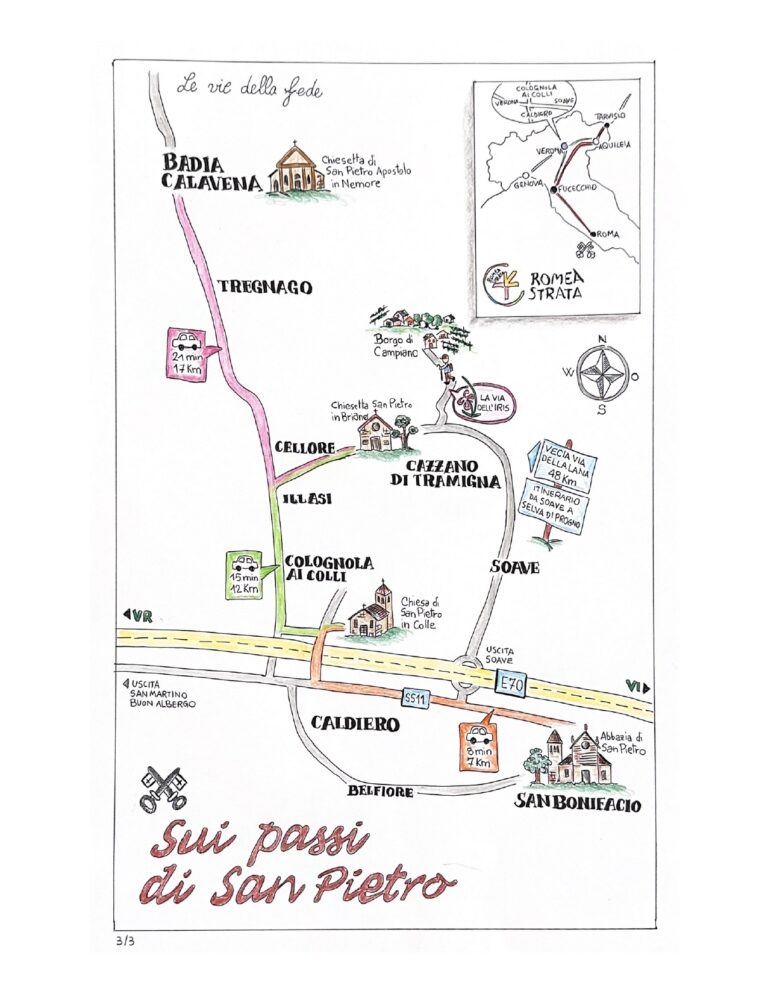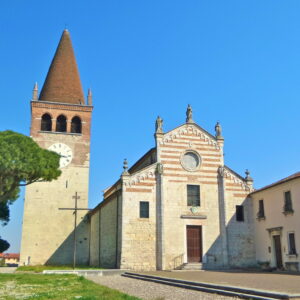Sui passi di San Pietro


1. SAN BONIFACIO | ABBAZIA DI SAN PIETRO
Con la sua chiesa, il campanile, gli edifici monasteriali e la corte rurale, costituisce un vasto complesso che per secoli ha controllato ed amministrato l’esteso territorio che la circonda. L’attuale struttura è la somma di tre importanti fasi costruttive: quella romanica del XII sec, quella gotica del XIV-XV sec. ed infine quella barocca del XVII-XVIII secolo.

2. CALDIERO | SAN PIETRO IN COLLE
Si può affermare che l’edificio appartenga alla prima metà del XII secolo. Risale al 2002 l’intervento di restauro delle decorazioni pittoriche interne del XII secolo.

3. CAZZANO DI TRAMIGNA | SAN PIETRO IN BRIANO
In stile romanico, presenta numerosi affreschi databili al XIV secolo, con ben tre strati all’interno e alcuni sulla parete esterna, recentemente restaurati.

4. BADIA CALAVENA | CHIESA DI MONTE SAN PIETRO
Il complesso edilizio era costituito principalmente dal castello vero. Divenne dimora di monaci tedeschi dell’Ordine di San Benedetto, e si trasformò nel piccolo monastero menzionato in un documento di regole di affitto del 1133, dove si cita chiaramente il “Monasterium Sancti Petri de Calavena”.
